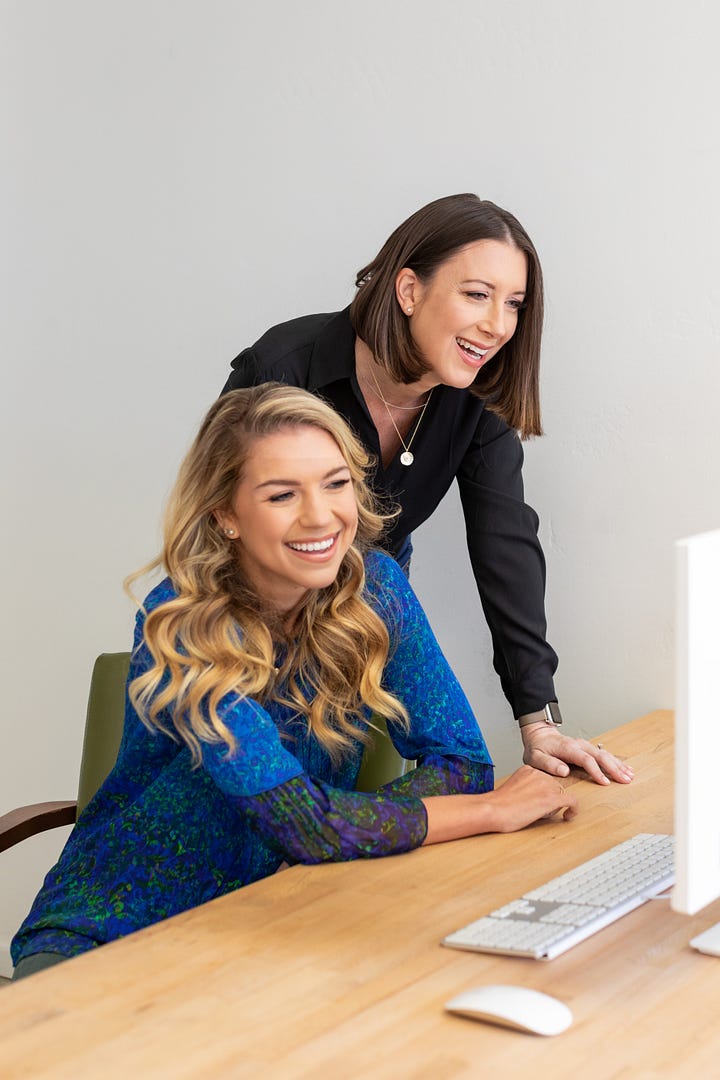

It started with a question about language.
Last week, I was moderating a panel at the HFA Show when Kathleen Tullie, founder and CEO of Active Kids, shared a story that hit me right in the chest.
We were discussing the words we use when we as women talk about fitness, the ones we see everywhere: Burn. Lean. Lengthen. Shred.
I asked, where are the words like build, power, grow, expand?
That’s when Kathleen told us about her daughter, Paige.
Paige was the kid everyone wanted on their team. The leader. The doer. The straight-A, varsity-athlete, everyone’s-best-friend kind of kid. She’d struggled—quietly—with body image, like so many girls her age.
Then, at sixteen, she had a ski accident. A bad one. Multiple surgeries. Chronic pain. And her silent struggle worsened.
Concerned, Kathleen sent Paige to an academic program near the ocean. Living on an island sans social media among a tight-knit group of friends sounded like just the thing. Later, Paige told her many of her classmates were struggling, too. Turns out, living in bathing suits and surrounded by comparison wasn’t helping.
It all came to a head during a doctor’s appointment where Paige’s doctor, stunned by her decline, looked her in the eye and said, “What are you doing?”
The pressure of perfectionism, the aftermath of a brutal accident, the isolation of COVID— layer upon layer, it had frothed to the top. There was no quick fix.
Paige spent the next sixteen weeks in inpatient treatment.
Kathleen told this story not to shock us, but to caution us. Because it’s happening everywhere. Disordered eating is spreading like wildfire. From 2018 to 2022, US health visits related to eating disorders more than doubled among people under the age of 17, according to the Journal of Pediatrics.
As I listened to Kathleen, I thought of my own fourteen-year-old daughter, who got her first phone last month.
Like so many kids her age, she uses TikTok. She and her friends swap silly videos: classroom pranks, dogs doing ridiculous things, goofy dance trends. That’s the TikTok I know, anyway.
But after hearing Kathleen’s story, I was inspired to do more research on the topic. (My former employer published an excellent piece on how TikTok algorithms served 13-year olds dangerous content, including emaciated images and purging techniques.)

In my case, I know these years are just beginning. I know how fast things can shift. I know that in a few swipes, a harmless feed of puppy videos can turn into “What I Eat in a Day” diaries and fasting challenges.
I know how quickly an algorithm can start whispering, you’ll be more popular if you just eat less.
And I know that even the strongest, most self-assured kids have trouble resisting that.
Is “Skinny” Back?
Despite the best intentions of the Dove campaigns and Aerie’s no-airbrushing efforts, it never really left. Now, with the rise of GLP-1s, the seduction of ‘skinny’ seems more potent than ever before.
“The ‘thin is in’ mentality has come back with a roar,” said Kristina Saffran, co-founder of Equip. Diagnosed with anoxeria at just ten years old, Kristina has spent years helping others recover from disordered eating. Since its inception in 2019, Equip has treated nearly 10,000 patients and continues to double in size year over year. With the uptick in GLP-1 use and algorithms pushing toxic content to teen girls, she says, the crisis is only deepening.
She’s not exaggerating.
In a recent New York Times piece, fashion critic Vanessa Friedman pointed out the obvious: models are getting smaller again. It’s a rerun of 2000s body culture– only this time, apps are amplifying the madness: TikTok’s endless loop of body transformation posts, weight-loss “hacks,” tracking apps like MyFitnessPal that can lead to obsessive dieting have laid the groundwork. Layer the GLP-1 craze on top of that, and it’s only going to get worse.
These drugs, designed to help people with diabetes and obesity, are now ubiquitous and much more affordable. Your neighborhood gym might offer GLP-1s to customers who ask for them. Your spa does as well. If parents are consuming these drugs and loving their instant results, it’s no surprise that their kids want them too. (The FDA approved Wegovy for adolescents 12 years and older with obesity in late 2022.)
Young women, already thin, are using them to chase an impossible standard.
Hillary Taymour, the designer behind Collina Strada, put it bluntly in the Times article:
“All the plus-size girls went to midsize because of Ozempic, and all the midsize girls went to standard size. Everyone’s on it.”
So What Do We Do?
Let’s start with taking back the conversation.These are the things I’m working on as a parent.
1. Start Talking—Now.
Encourage full plates. Normalize set meal times. Eating is fuel—not something to be feared.
2. Change the Language.
This goes double for those of us in the wellness industry. Fitness is— or should be— about helping others reach their potential, expand their capabilities, and grow in all aspects. Are we using language that encourages others to build, grow, and expand? Or are we reinforcing the message that they should be smaller, thinner, and less?
3. Be a Mirror.
Kids watch everything. They see you skipping meals. They hear you complain about your thighs. They pick up on the way you talk about other people’s bodies. Show them a different path.
4. Get Real About the Risks.
Eating disorders kill more people than any other mental illness. If you see changes in behavior, don’t wait. Get ahead of it early.
We live in a world that brazenly tells women: Shrink. Smooth. Flatten. Erase.
Push against it. Build your body, your joy, your voice, your life.
That’s the message that I want my daughters–-and yours–-to hear.




Such an important message. Well done
This is exceptional. And of course terrifying!